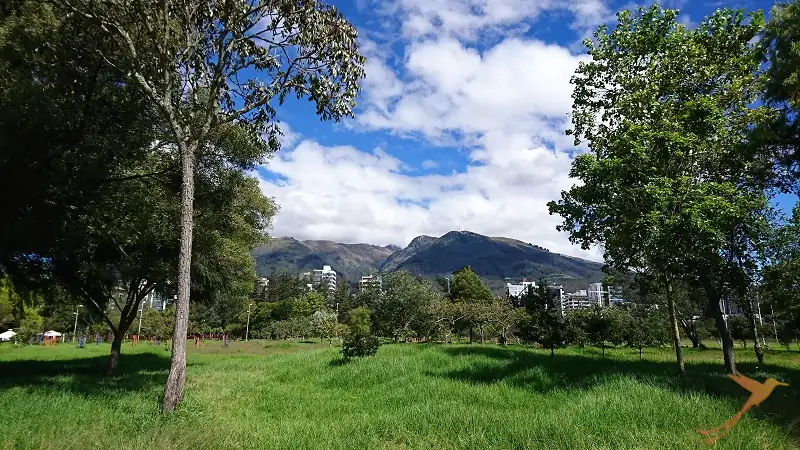
History of the Amazonas Avenue
Before the 19th century, what today is the Amazonas Avenue were ample green areas that were used to cultivate Andean crops. With the population and businesses growing, wealthy families started moving to the areas north of the city center and the sector of the Amazonas Avenue was developed for housing. The area was called the “Mariscal” (Spanish for Marshall) in honor of Marshall Antonio José de Sucre, fighter for Ecuador’s independence. The sector remained completely residential until 1920, when the streetcar started going there and the first businesses and shops opened in the main streets.
The Avenue takes its name from the Amazon River, which was discovered by the conquistadores in 1542. Their expedition started from Quito.
Amazonas Avenue today
The Amazonas Avenue, also known as Amazonas Boulevard, is one of Quito’s most important streets. It connects the touristic center with the business center in the north, extending for 4.2 miles. Many visitors from many different countries come to the Amazonas Avenue, as well as executives, and street artists.
Zona Rosa
It is one of the main tourist sites in the capital, considered its “Zona Rosa.” Modern façades and historic buildings, some reminiscent of medieval palaces, line the sidewalks. Many storefronts call for the tourists’ attention, artisans’ stores, cafeterias and hotels invite them in. Street performers seem to never get tired and small parks invite for short rests. At night, bars, pubs, and discos open their doors.
Ciclopaseo
On Sundays the Amazonas Avenue is very popular for cyclists: every week the so-called “Ciclopaseo” (roughly translates as an outing by bike) takes place and only bikes are allowed from 8 am to 2 pm. Many locals as well as tourist use the chance to get to know this part of Quito better, enjoying the parks along the route for a relaxing break.
Años viejos
A second event that takes place here is the exposition of the “años viejos”, the effigies that are prepared on New Year’s Eve. Each December 31, thousands of people come to see the art, magic and colors of the effigies that show different things from Ecuador and outside. The special sense of humor of the Quiteños (people from Quito) can be observed in the jocular notes and stories that accompany each effigy.
On and around Amazonas Avenue many hotels and touristic sites and services can be found, like for example the hotels Hilton Colon, JW Marriot, Mercure, and the Hotel Río Amazonas. Some in historic buildings, others in modern constructions. One of Quito’s earliest high-rise buildings is also on this street, the main office of the Ecuadorian airline TAME.
The parks El Ejido and La Carolina are also on the avenue and are popular places for Quiteños and tourists alike and serve as the city’s lungs.

The newest addition is the Parque Bicentenario, which used to be Quito’s airport. It is now being converted into a huge park.
Interesting visitors’ sites are for example the Vivarium, Quito’s botanical garden, the artisans’ market, the Museum Mindalae, and the monument to Circassia. The Plaza Quinde, Plaza de Toros and Quito’s largest malls are even more reasons to make the Amazonas Ave. a perfect place to live Ecuadorian culture and fun.
You want to know more about Quito? A Quito City Tour is part of our Andes Tours, Quito Three-Day Tour.







